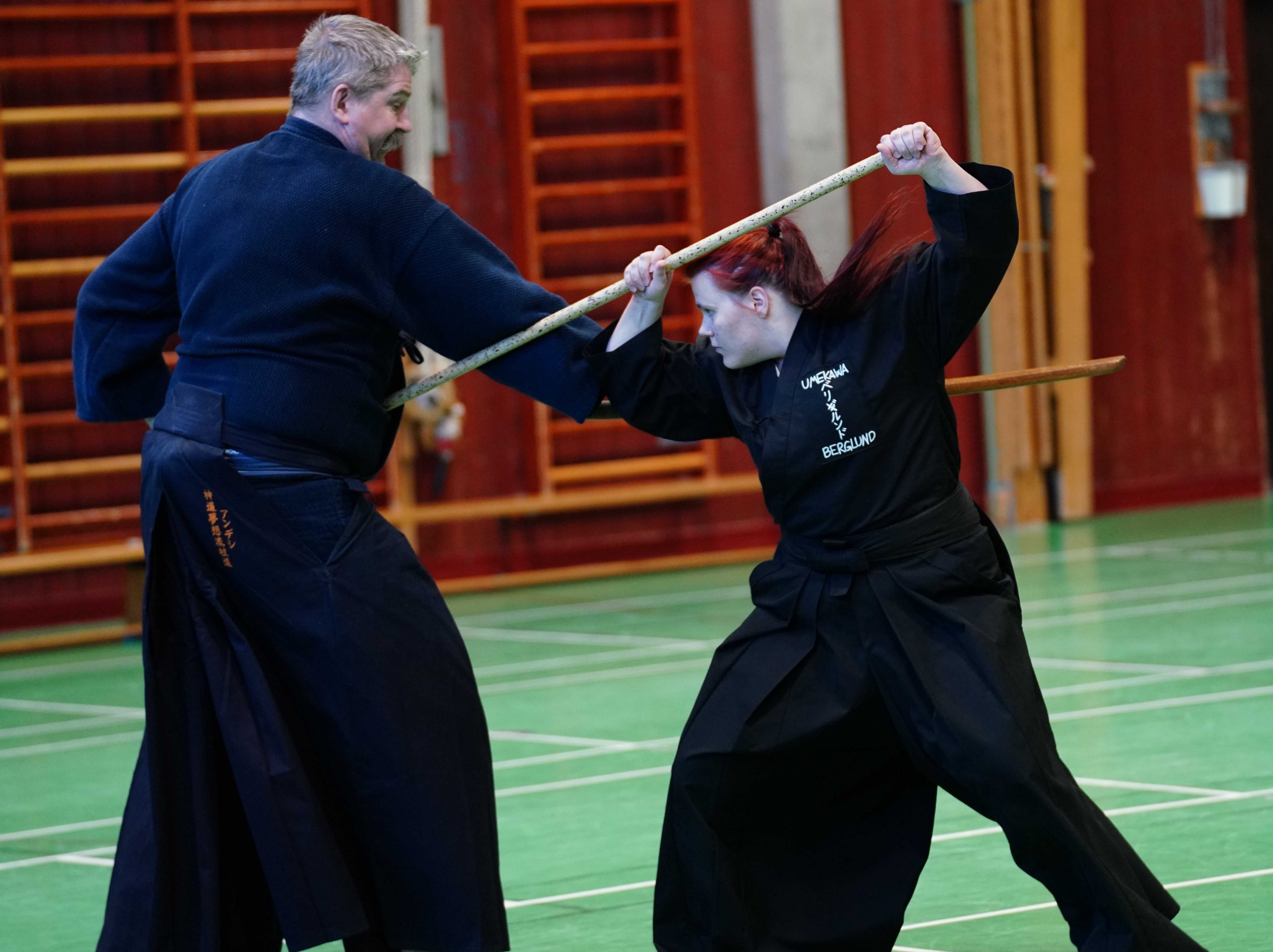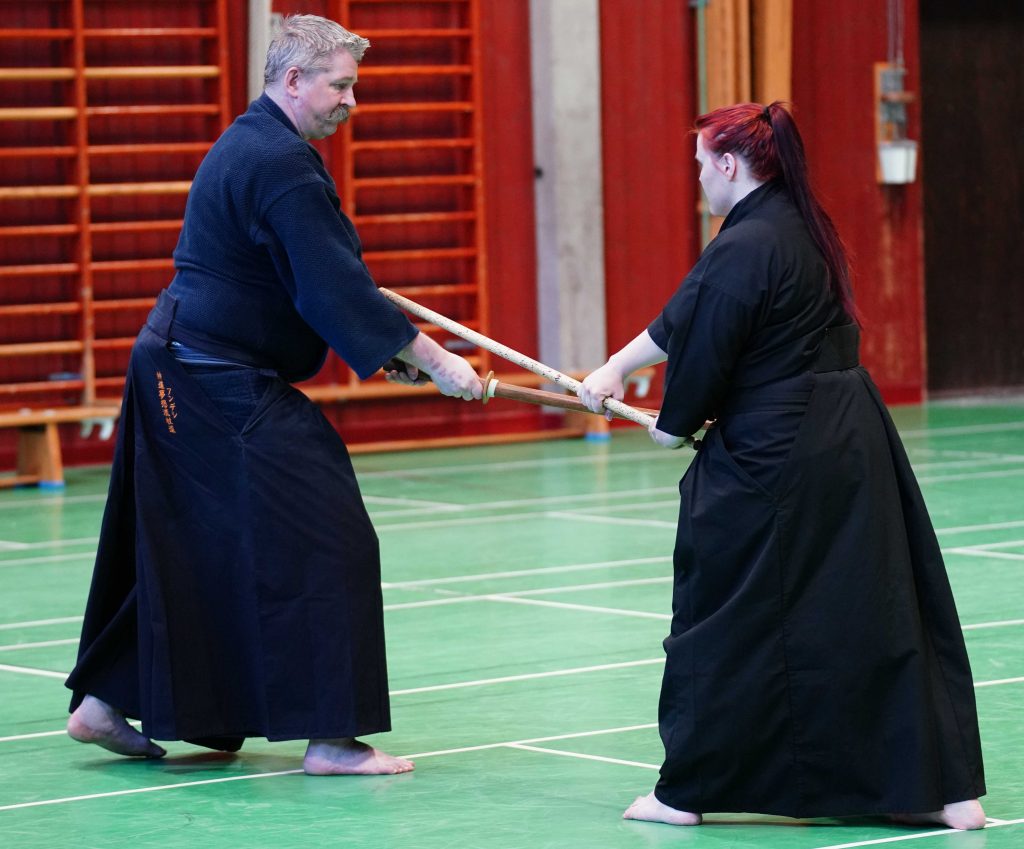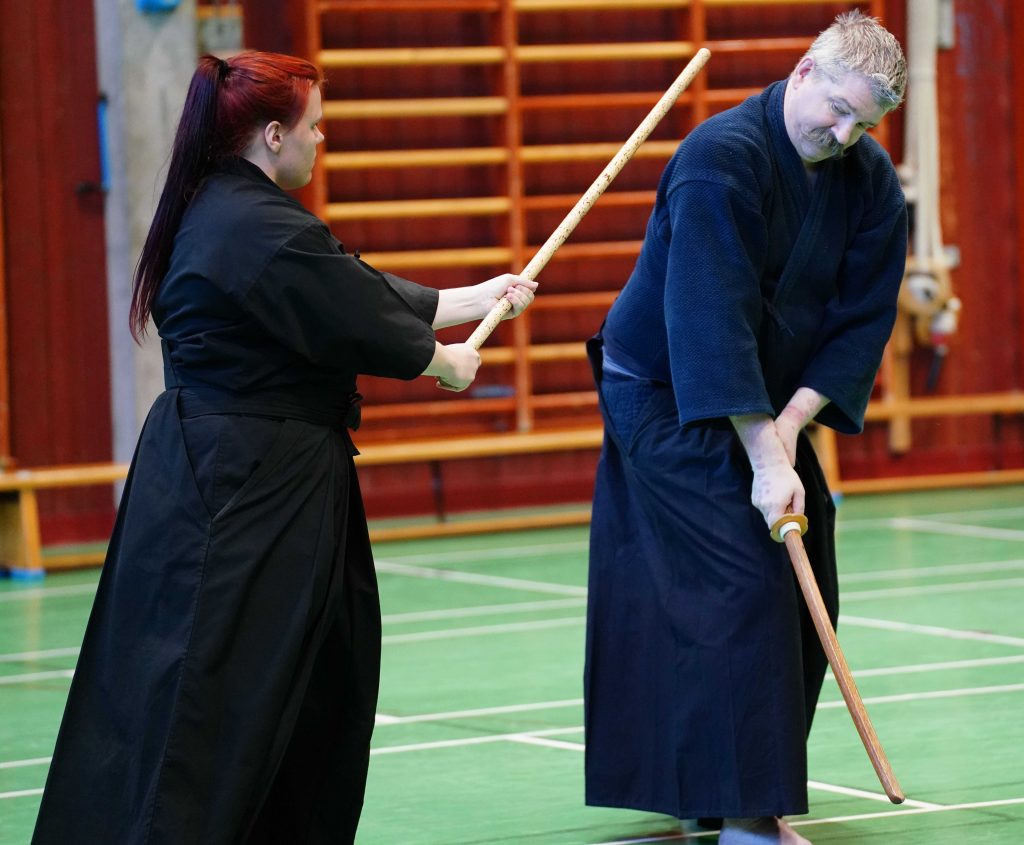


In jōdō (杖道) we use a staff (jō) to defend ourselves against a swordbearing opponent. The jō is traditionally 128 cm long and made from Japanese White Oak (白樫; Shirakashi). The style of jōdō we practice in Umekawa Budokai is part of a larger school of martail arts called Shintō Musō-ryū (神道夢想流). It was developed around the early 17th Century by the samurai Musō Gonnosuke.
As the story goes, Musō Gonnosuke was defeated by the legendary Miyamoto Musashi in a duel. Gonnosuke withdrew from society for a time and meditated on his loss, which is when he developed a set of tecnhiques to be used with the jō. After this there are multiple versions of the story. In Shintō Musō ryū it is said that Gonnosuke won his next duel against Musashi, using his new techniques, whilst others say that Musashi never lost a duel.
Beginners in jōdō focus on coordination and body control by practicing the basic techniques (kihon). These can be practiced either on your own (tandoku) or in pairs (sotai). Jōdō is practiced at your own pace, and eventually you test your technique against a wooden sword (bokuto/bokken). Later you move into practicing kata, which are predetermined patterns that simulate a duel.
In Shintō Musō ryū you also practice a number of different weapons than the jō. The school has over time included tanjo (short staff), kenjutsu (sword against sword), kusarigama (chain-and-sickle), jutte (police weapon) och hojōjutsu (how to restrain prisoners). You can see some of these demonstrated by Fred Quant-sensei.
Links
